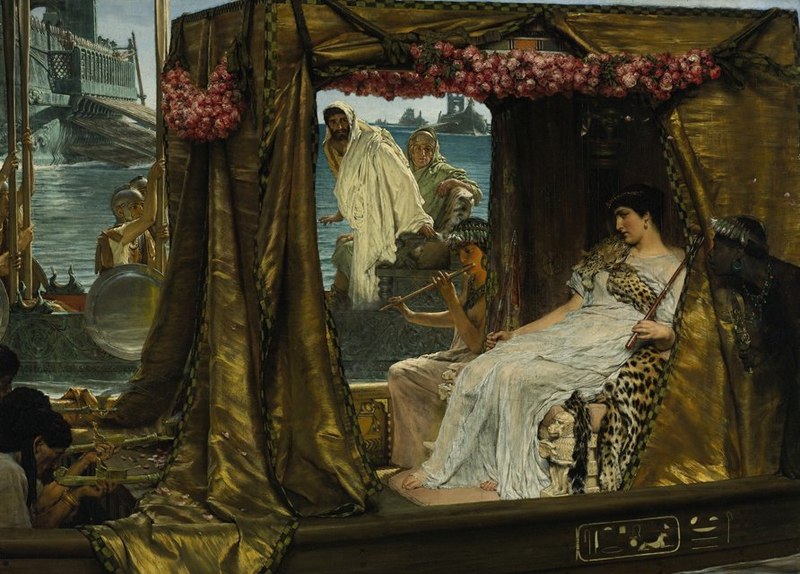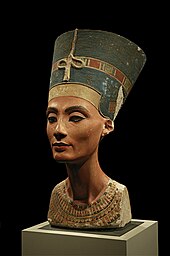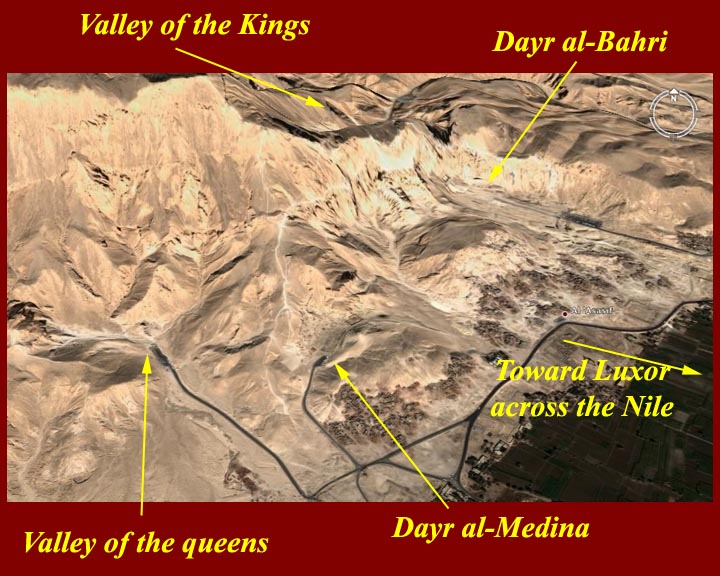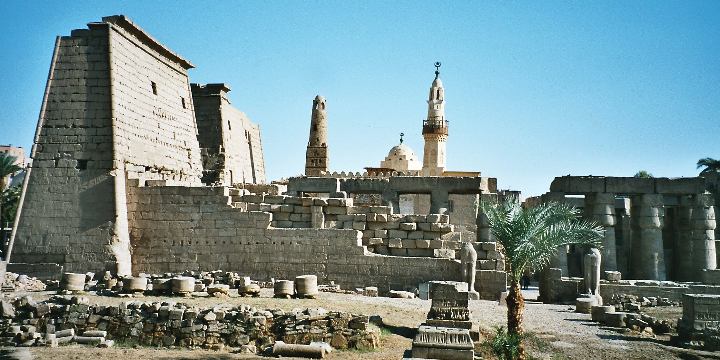
∙ Land Mass/Continent: Africa (Continent No. 6 of 7 on our journey)
∙ About Safaga: Safaga is a small port on the coast of the Red Sea and a tourist town leading to key parts of Ancient Egypt (including Luxor) by paved road
∙ Estimated Population: 487,896 in Luxor, where we’ll spend our day
∙ Distance From Home (San Diego, CA): 7,906 miles
∙ The Water That Got Us Here: The Red Sea
 |
| MOSES PARTS THE RED SEA AND THE ISRAELITES PASS, ESCAPING PURSUING EGYPTIANS |
| SPHINX-LUXOR |
∙ Official Language: Egyptian Arabic, but English is widely spoken
∙ Local time:
∙ Ancient Egypt was concentrated along the lower reaches of the Nile River (the longest river in the world, flowing north for 4,130 miles, and the lifeline of this region for much of human history)
∙ When Johnnie Cochrane said “Da Nile Ain’t Just a River in Egypt” – he apparently meant that it also runs through Sudan, South Sudan, Burundi, Rwanda, Democratic Republic of the Congo, Tanzania, Kenya, Ethiopia, Eritrea and Uganda!
∙ Egypt reached the pinnacle of its power during the “New Kingdom” (between the 11th and 16th centuries BC) in the “Ramesside period”, named after the 11 pharaohs who took the name “Ramesses” – after which it entered a period of slow decline
∙ The pharaohs established unprecedented prosperity by securing their borders (something the U.S. could learn) and strengthening diplomatic ties with their neighbors
 |
| COLOSSAL STATUES OF RAMESSES II |
∙ Luxor was the ancient city of Thebes, the capital of Egypt, during the New Kingdom
∙ In 332 BC, Alexander the Great conquered Egypt, and it became a seat of learning and culture under Greek rule
∙ Eventually, it fell to the Roman Empire in 30 BC, following the defeat of Marc Anthony and Queen Cleopatra VII by Octavian (later Emperor Augustus) (i.e., Rome defeated Greece to conquer Egypt)
 |
| ANTHONY AND CLEOPATRA VII |
| TEMPLE OF LUXOR |
∙ As in modern day Middle East, they used religion to ensure the cooperation and unity of (i.e., to control) their people
 |
| THE BUST OF NEFERTITI |
∙ Egypt’s art and architecture were widely copied, and its monumental ruins have inspired the imaginations of travelers and writers for centuries
∙ Luxor’s economy, largely dependent on tourism, was greatly hit by the Luxor massacre in 1997, when 64 people (including 59 tourists) were killed with firearms and knives inside the Deir el-Bahri Temple (of female pharaoh Hatshepsut), but has since recovered
∙ An Egyptian court, on 12/27/27, ordered military rulers to stop using female virginity tests on female detainees, in a rare condemnation by a civilian tribunal of a military practice in Egypt, which the military "justified" by its desire to weed out false claims of rape while in custody -- a small step from lunacy toward civil rights for women
∙ Travel video: http://www.youtube.com/user/bestdestination#p/search/0/MZsw1xkn5RA
∙ CLIMATE
∙ Rainfall in Luxor is rare; average annual rainfall is .09 inch per year!
∙ Average low for April: 60.8
∙ Average high for April: 95
| MOSQUE AT LUXOR TEMPLE |
∙ Luxor - one of the most impressive cities in Egypt (137 miles away from Safaga)
∙ Luxor is, essentially, the “world’s greatest open-air museum” of towering pillars, hieroglyphics and countless murals and statues
 |
West Bank
∙ On the West Bank of the Nile River lie the monuments, temples and tombs of the Theban Necropolis -- a UNESCO World Heritage Site -- including the Valley of the Kings and Valley of the Queens
 |
| LUXOR TEMPLE |
East Bank
∙ The ruins of Karnak and Luxor Temples stand within the modern city - together, one of the largest ancient religious sites in the world
∙ The Mummification Museum in the City of Luxor
∙ The Luxor Museum
No comments:
Post a Comment